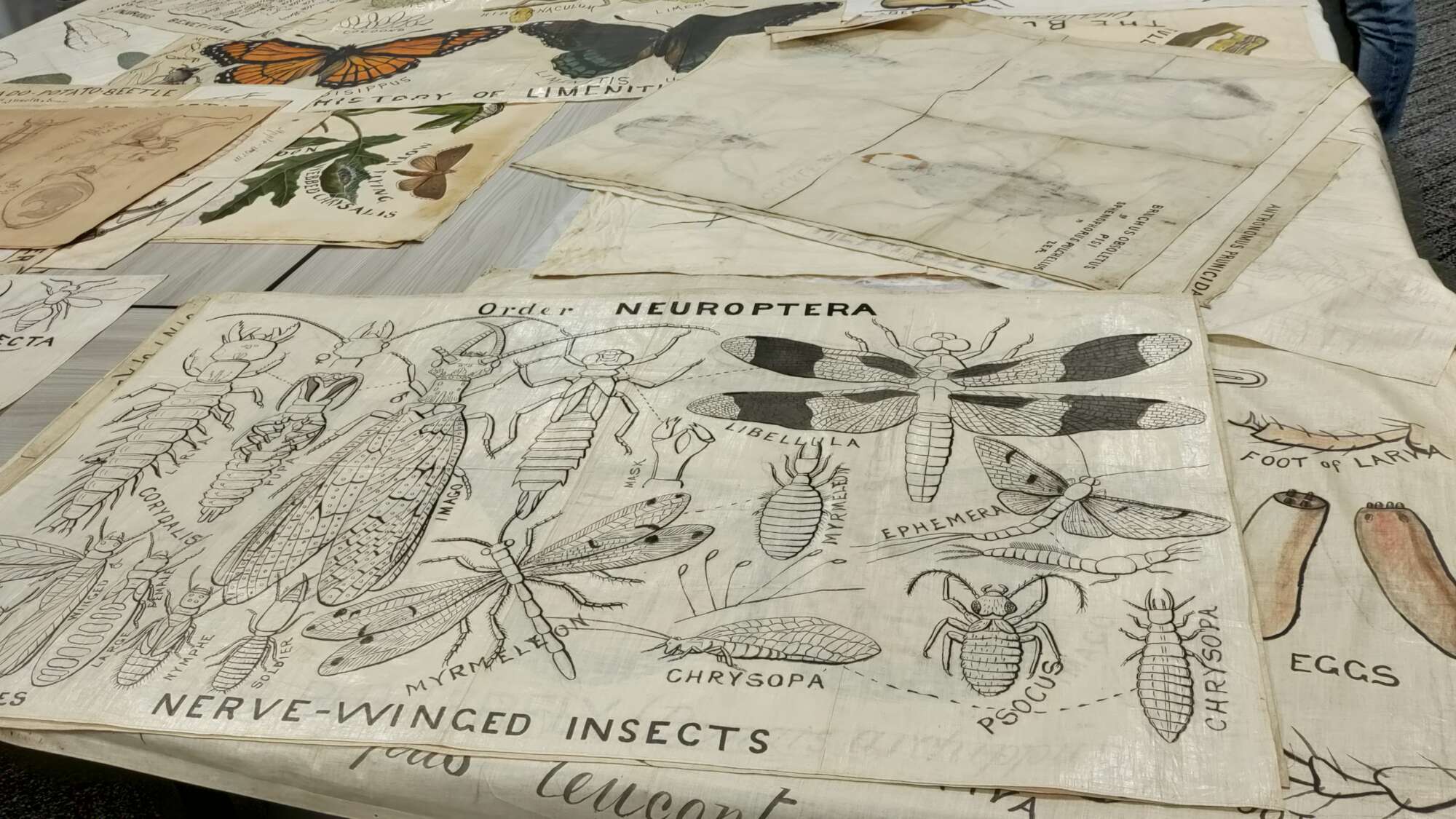Charles V. Riley’s historic canvases of insects continue to inspire students with their impressive accuracy.
Beautifully accurate print paintings of renowned entomologist Charles V. Riley are still eye-openers — but their deteriorating condition puts them in peril.
Riley, the father of American biological control, created silk canvases with detailed and accurate depictions of different insects.
His time lecturing at K-State was short, ranging from 1872 to 1873, but impactful for the future entomologists of K-State. After his passing, Riley’s wife, Emilie, donated his collection pieces to the special collections of Hale Library.
Restoration Station
After Riley’s death in 1895, K-State entomology students can still touch a piece of history and learn from the artwork, just as students from 130 years ago did.
But the silken canvases have crucial damage — tears and holes — and must be handled mindfully. In the care of Hale Library’s special collections and archives, the pieces are kept in an environmentally controlled space.
“The library’s special collections have helped us a lot by getting the appraisal for the works to be restored,” said Jacqueline Maille, a doctoral student in entomology. “If the works were to be restored, it would open opportunities to enhance classes or display the works for a wider audience to enjoy.”
K-State’s entomology department and the Popenoe Entomology Club are bringing attention to the importance of these pieces and their effort to raise $10,000 to have them restored.
“This preservation effort has pushed me out of my comfort zone and led me to network in ways I never imagined,” Maille said. “I have been able to talk to people at the special collections and archives at Hale library, people at the KSU Foundation to help support our effort, and the president of the Entomological Society of America. I even wrote a blog post on Entomology Today that highlights our club’s efforts for this preservation effort.”
Learning from history
Teaching methods during Riley’s time were very different from the PowerPoint and Zoom lectures of today.
Riley’s artwork needed to be artistically skilled to communicate about organisms and other living examples that might have been used in lessons. The history behind the canvases gives today’s viewers a chance to compare changes in teaching and studying the taxonomy of insects and to track how agricultural practices have developed.
“I have seen members’ enthusiasm grow for this project,” said Maille. “The art’s history is important and preserving these teaching aids would open opportunities for educators, students, and K-State to make an impact.”
To help support the restoration of C.V. Riley’s art, give here.
Written by: Lilly Majors


